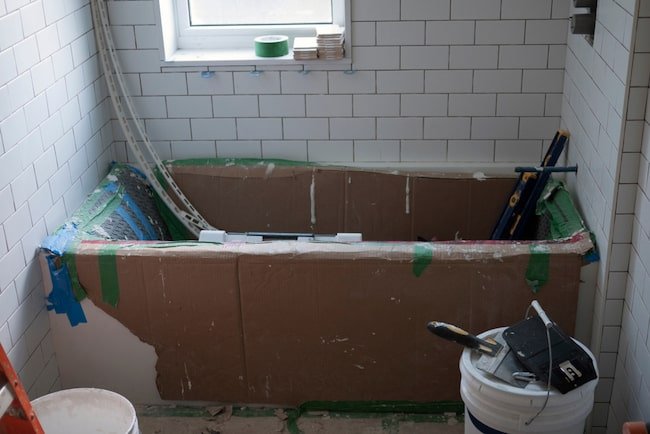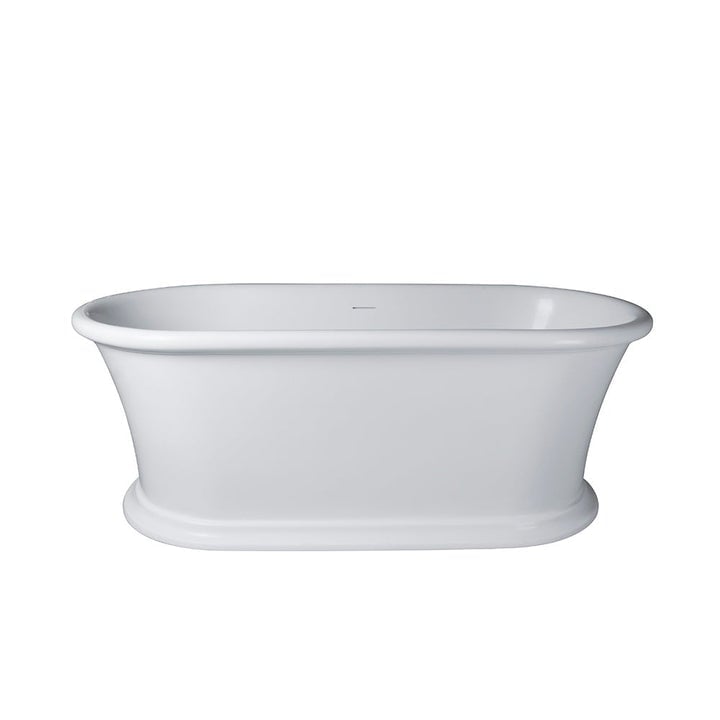By Plumbing Guide for Installing a Bathtub
By Plumbing Guide for Installing a Bathtub
Blog Article
The article following next in relation to How to Install a Bathtub is quite enjoyable. Don't miss it.

Installing a tub isn't exactly rocket science, yet it does need strong plumbing, carpentry, and in some cases, tiling skills. Replacing an old bath tub with a new one is also a reasonably tough task. If the old bathtub is conveniently easily accessible, the project can relocate rapidly; if you need to open a wall to get rid of the old tub and place the brand-new bath tub, the task is much harder. In either instance, the job is within a home handyman's abilities, although you will certainly require a helper to move out the old tub and also embeded in the brand-new one. Ensure you have actually certified yourself for the work and fit attempting it. As opposed to employing a professional to take over a halfway-completed project, it is far better to consider using one prior to you begin. Opportunities are you might need a specialist plumber to make tube links.
This write-up will aid you install a brand-new tub in your bathroom if you have already acquired a new tub and also don't need to change the setup of your previous water supply pipes.
Your devices and also material list must make up the following:
Removing Old Touches
If you require to replace old taps with brand-new ones as a part of your installation, after that the first thing you ought to do is separate the supply of water. After doing so, switch on the faucets to drain any water continuing to be in the system. The procedure of getting rid of the existing taps can be rather bothersome as a result of the limited accessibility that is commonly the instance.
Utilize a container wrench (crowsfoot spanner) or a tap device to reverse the nut that attaches the supply pipelines to the taps. Have a towel prepared for the remaining water that will come from the pipelines. When the supply pipes have been gotten rid of, utilize the exact same device to loosen up the nut that holds the taps onto the bath/basin. You will need to quit the single taps from turning throughout this process. When the faucets have been gotten rid of, the holes in the bath/basin will certainly need to be cleansed of any old securing compound.
Before carrying on to fit the new faucets, contrast the pipe links on the old taps to the new faucets. If the old faucets are longer than the brand-new taps, after that a shank adapter is required for the new faucets to fit.
Fitting New Touches
If the tails of the brand-new faucets are plastic, after that you will certainly need a plastic connector to stop damages to the thread. One end of the adapter fits on the plastic tail of the tap and also the various other end supplies a link to the current supply pipelines.
If you require to fit a monobloc, then you will certainly call for decreasing couplers, which connects the 10mm pipe of the monobloc to the conventional 15mm supply pipeline.
Next off, position the faucet in the installing opening in the bath/basin making certain that the washing machines are in area between the tap as well as the sink. Safeguard the tap in place with the supplier offered backnut. When the faucet is safely in position, the supply pipes can be attached to the tails of the faucets. The faucets can either be connected by utilizing corrugated copper piping or with regular faucet connectors. The previous kind should be linked to the tap ends first, tightening up only by hand. The supply pipes can later on be linked to the various other end. Tighten up both ends with a spanner after both ends have actually been attached.
Setting up the Bath tub
Making use of the two wood boards under its feet, place the bath tub in the required position. The wood boards are valuable in equally spreading the weight of the bathtub over the area of the boards rather than concentrating all the weight onto 4 tiny factors.
The next goal is to guarantee that the tub is leveled all round. This can be attained by examining the level and readjusting the feet on the bath tub till the spirit level reads level.
To set up faucets, fit all-time low of the furthest flexible faucet port to the suitable supply pipe by making a compression sign up with; then do the same for the various other tap.
Turn on the water system and examine all joints and also brand-new pipework for leaks as well as tighten them if necessary. Load the tub and additionally inspect the overflow outlet and also the normal electrical outlet for leaks.
Finally, deal with the bath paneling as described in the producer's instruction manual. Tiling and sealing around the tub must wait up until the tub has actually been used at the very least when as this will settle it into its last setting.
Planning for the Setup
To start with, the supporting framework provided with the bathroom must be fitted (if required) according to the supplier's instructions. Next off, fit the taps or mixer to the tub. When suitable the faucet block, it is important to make certain that if the faucet includes a plastic washer, it is fitted in between the bathroom and the taps. On a plastic bathroom, it is also practical to fit a sustaining plate under the taps system to avoid stress on the tub.
Fit the flexible tap ports to the bottom of the two faucets utilizing 2 nuts and olives (occasionally provided with the tub). Fit the plug-hole electrical outlet by smearing mastic filler round the sink electrical outlet hole, and afterwards pass the electrical outlet with the hole in the bathroom. Use the nut provided by the supplier to fit the plug-hole. Check out the plug-hole electrical outlet for an inlet on the side for the overflow pipe.
Next, fit the end of the flexible overflow pipeline to the overflow electrical outlet. After that, screw the pipeline to the overflow face which ought to be fitted inside the bath. See to it you use every one of the provided washers.
Connect the trap to the bottom of the waste electrical outlet on the bathtub by winding the string of the waste electrical outlet with silicone mastic or PTFE tape, and also screw on the catch to the outlet. Connect the bottom of the overflow tube in a similar manner.The bathroom ought to now be ready to be suited its final placement.
Tiling Around the Bathtub
In the area where the bathroom meets the ceramic tile, it is essential to seal the accompanies a silicone rubber caulking. This is important as the installation can move sufficient to break a rigid seal, causing the water to penetrate the wall between the bathroom and also the tiling, resulting in difficulties with dampness and also feasible leakages to the ceiling below.
You can select from a range of coloured sealers to blend in your fixtures and also fittings. They are offered in tubes as well as cartridges, as well as are capable of securing gaps approximately a width of 3mm (1/8 inch). If you have a bigger gap to load, you can load it with twists of soaked newspaper or soft rope. Remember to always load the bath tub with water prior to securing, to enable the movement experienced when the tub is in use. The sealer can crack fairly early if you do not take into consideration this movement prior to sealing.
Alternatively, ceramic coving or quadrant ceramic tiles can be used to edge the bathroom or shower tray. Plastic strips of coving, which are easy to use and also reduce to size, are also conveniently offered on the marketplace. It is advisable to fit the floor tiles utilizing waterproof or waterproof glue and grout.
Bathtub Installation
How Important Is A Bathtub To Your Home?
High-quality baths, showers, and other bathroom updates are necessary when considering a smart investment in your home. It’s a room that you go to every day and one that is constantly being used by guests.The bathroom is one of the top trafficked rooms in a home and also one of the most valuable in terms of home resale.
Install Piping Before Tub
You will be using your existing drain and waste vent system, but pipes required include the hot and cold water supply lines and a pipe leading to a shower head. A mixing valve and shower head are also needed. Air chambers may be required.
Position the Tub
Lower the tub into place so that the continuous flange fits against the wall studs and rests on 1’x4' or 2’x4' supports. Anchor the tub to the enclosure with nails or screws inserted through the flanges into the studs.
NOTE: Remember, bathtubs and shower stalls may require support framing. A bathtub filled with water is extremely heavy, so check building codes and framing support before installing the tub.
Assemble Drain Connections
Assemble the bathtub drain connections by connecting the tub overflow with the tub drain above the trap, not beyond it. The trap will have a compression fitting that screws over the arm of the overflow assembly.
Place a Pipe For the Shower Head
First, locate a brass female threaded winged fitting and attach it to a framing support via a screw or a nail. Then run a pipe up the wall for the shower head. Sweat or solder the other side of the brass fitting to the top of the pipe.
Attaching Hot and Cold Water Lines
Attach your water lines for both hot and cold by sweating these directly into the hot and cold ports of the mixing valve. The mixing valve will be how water enters the tub’s system, not by the pipes themselves.
Install the Spout
Extend a piece of 1/2 inch pipe, or whichever length is specified in the manufacturer’s instructions, for the tub spout. Sweat on a male threaded fitting at the end of the pipe or use a brass nipple of the proper length and a 1/2 inch cap.
NOTE: At this point you should have your rough-in plumbing work inspected before proceeding further.
Check For Leaks
Restore the water pressure and check the drain connection and the supply pipes for any sign of leaking.
estore the Bathroom Wall
Replace the wall with moisture-resistant drywall as a base for your wall covering. Seal the joints between the wall and your new tub with silicone caulk as protection against water seepage.
https://www.berkeys.com/2016/12/02/bathtub-installation-dallas/

We had been guided to that editorial about How to Install a Bathtub: Install an Acrylic Tub and Tub Surround from an acquaintance on a different web property. Be sure to take the opportunity to promote this blog if you liked it. Thank you so much for your time spent reading it.
Peace of mind? Dial! Report this page